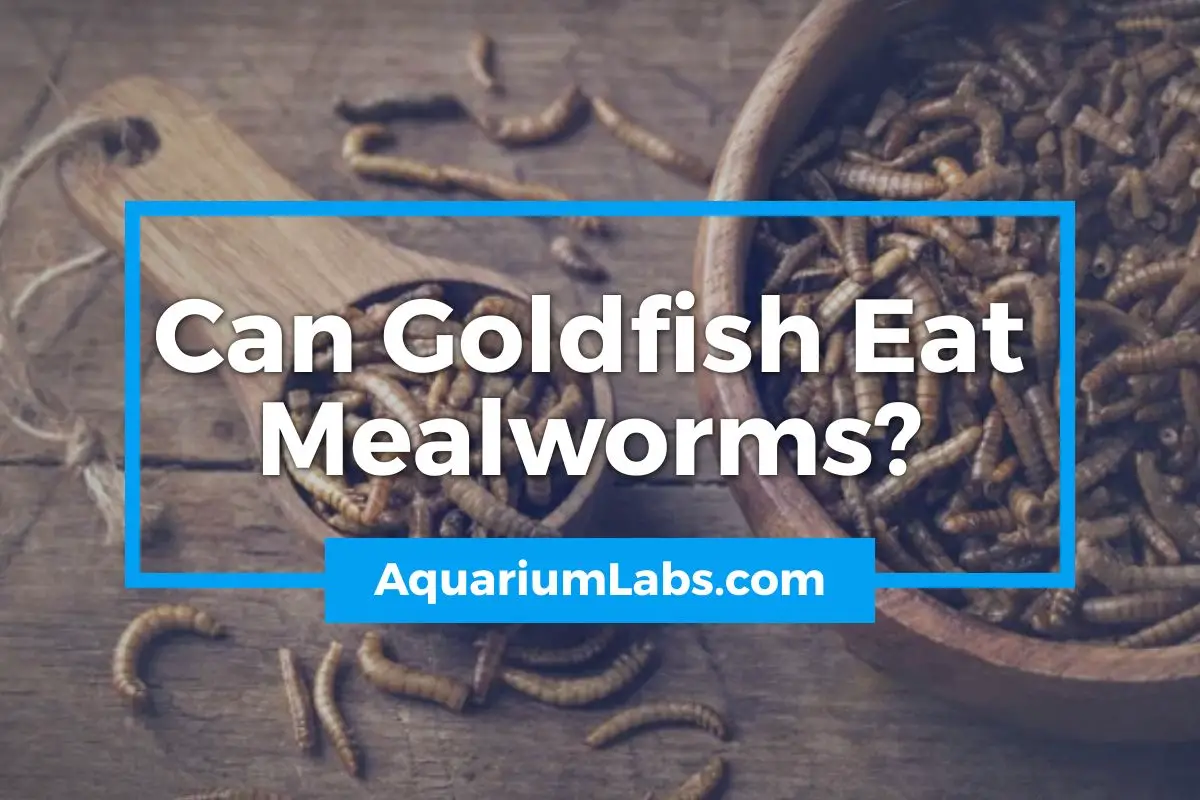Mealworms can seem like a very unusual item to feed aquarium fish. They are fairly large and very squirmy! Reptile and amphibian owners offer them to their pets. But would a goldfish or some other aquarium fish ever find mealworms interesting? Can goldfish eat mealworms?
Can Goldfish Eat Mealworms?
Many fish eat mealworms. Since they are insect larvae, they are a natural addition to a balanced and varied diet. If you have goldfish in an outdoor pond, you might see them eating bugs regularly. Koi fish eat ants that fall into a pond, for example. Even gamefish like crappie eat mealworms, wax worms, and other insects with gusto.
Goldfish eat many invertebrates, including worms, insect larvae, snails, and baby clams. They manage this by using their pharyngeal teeth. These are a set of jaws and teeth located in the throat. Koi fish, goldfish, and other carp have to first partially swallow a crunchy item. Once it hits the throat, these pharyngeal teeth then chew it up into small bits that can be swallowed.
If you do want to offer mealworms as goldfish food, but you have smaller fish, I recommend chopping them up into smaller pieces first. That way, you can introduce live foods without the fish struggling to swallow a whole mealworm.
What Are Mealworm Beetles?
Mealworms are the larvae of the Mealworm Beetle (Tenebrio Molitor). These insects are raised in huge numbers in captivity because they are a suitable live food to feed goldfish and other larger fish.
In fact, many animals eat mealworms readily. Reptiles, amphibians, birds, and small mammals can all eat worms. Their attractive golden-yellow exterior is easily recognizable and makes them easy to find should you drop one on the floor.
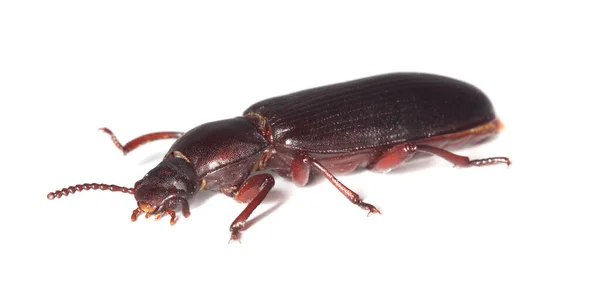
Mealworms are even used in certain insect-based human food. In Western countries, it is mostly for shock and educational value. But in East Asia, they have been raised as an inexpensive and easy to raise source of protein for centuries.
Their nutritional value is also excellent despite needing little in the way of land, water, or expensive feed. According to Wikipedia: “For every 100 grams of raw mealworm larvae, 206 calories and anywhere from 14 to 25 grams of protein are contained.[11] Mealworm larvae contain levels of potassium, copper, sodium, selenium, iron, and zinc that rival that of beef. Mealworms contain essential linoleic acids as well. They also have greater vitamin content by weight compared to beef, B12 not included.”
In short, mealworms are a great alternative to beef and other input-intensive livestock!
Mealworms are also good ice fishing bait for most fish. Fishermen who target yellow perch, walleye, bass, warm-season crappie, and other gamefish also often use mealworms on a bait hook. They are a great alternative hook bait to live minnows and other small fish that are hard to keep alive for long.
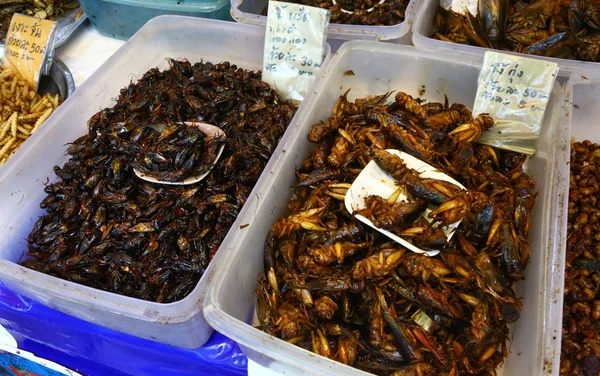
Can Goldfish Eat Dried Mealworms?
Many fish will eat mealworms dried, and goldfish are no exception. Goldfish owners will find dried mealworms to be much more convenient since they can be stored at room temperature and don’t need feeding or watering.
Are Dried Mealworms Healthy For Goldfish?
Dried mealworms are not quite as healthy as live mealworms because some water is lost during the dehydration process. This changes the chemical composition of the food, slightly reducing the nutritional value of the mealworms.
But not by very much. Even dried mealworms are still very healthy compared to many low-quality generic fish food brands. And they are much more convenient to keep on hand than live mealworms.
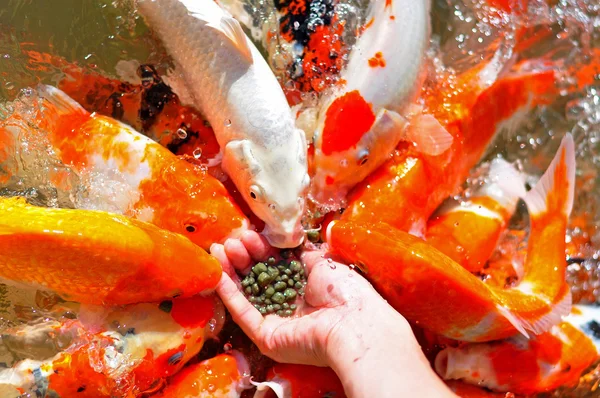
How Can I Keep Mealworms As Goldfish Food?
Mealworms make great pet food, but they are a lot less convenient than prepared fish foods. Since mealworms are alive, you need to put a little effort into keeping them alive.
Fortunately, raising mealworms is very easy to do. They will eat almost anything vegetable-based that you throw into their container.
Vegetable and fruit scraps are the most popular items to feed them. Lettuce, apple cores, cucumber, fruit peels…Anything you have on hand will be reduced to nothing if you have a large number of mealworms.
Here is a video demonstrating just how hungry a mass of live mealworms is and how readily they eat what is being offered!
Fresh fruits and vegetables also provide all of the water your mealworm colony needs. Placing bowls of water inside the chamber is never a good idea because mealworms can’t swim and will easily drown. Their bodies then foul the water for the others (plus it smells terrible).
Do Mealworms Bite?
Something to beware of is that mealworms do have the ability to bite, but it is very weak. A mealworm has mandibles for chopping up vegetables and fruit. But their bite is too weak to break human skin.
So long as your fish with carnivorous appetites can adequately chew up a mealworm, the bite won’t harm them either. Only a very small fish struggling with a mealworm might be put off by a bite from one. Only feed fish mealworms that you know can handle them (or chop them up if you aren’t quite sure).
Will Other Aquarium Fish Eat Mealworms?
Not all fish enjoy trying to eat mealworms. Not only can they bite, but some fish can’t chew through the tough outer cuticle. A mealworm might be too big for certain fish.
Instead, you can try feeding live bloodworms, tubifex worms, brine shrimp, and other invertebrates that are softer and smaller.
A young fancy goldfish might have to do a bit more growing before you can feed mealworms to it. So in the meantime, these alternative fresh and frozen foods are a good way to get the same protein, fat, and other essential nutrients that promote healthy growth.
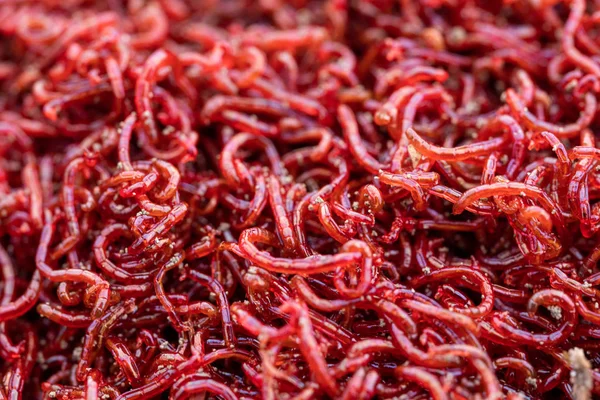
You could feed a betta baby mealworms. But full-sized mealworms are simply too large for smaller fish. I would keep dried mealworms on hand as a nice, protein-rich snack for a betta fish.
When the time feels right, you can break dried mealworms up into smaller pieces that a betta can then eat like any other fish food.
Mealworms are rich in not just protein but also vitamins and fat. Both of which are part of a healthy diet and can be too low in generic fish food brands.
Other fish that you can feed mealworms to include cichlids, catfish, arowanas, larger barbs, eels, and loaches. Pretty much any large aquarium fish eat earthworms and mealworms with gusto!
Wrapping Things Up
At first glance, you might be worried about offering mealworms to your goldfish. We know that goldfish will eat just about anything that hits the water. Goldfish eat rice, bread, and other things that aren’t necessarily good for them.
And the way mealworms bite at anything in their environment might cause you to worry about your fish’s safety. Fortunately, you now know that a mealworm bite is nothing to fear, even for your live fish.
Any goldfish that is not too small will find live or dried mealworms to be a great addition to their diet. Their nutritional value is high, and they provide a host of vitamins as well as extra fat and protein that enriches a goldfish’s diet.
If you offer enough of them and mix it with soft plants, algae, quality goldfish pellets, and a little frozen food, you might even condition your fish enough to see them spawn. So give this live food a try sometime, and let me know how it goes for your aquarium fish!
More Interesting Reading About Goldfish:

